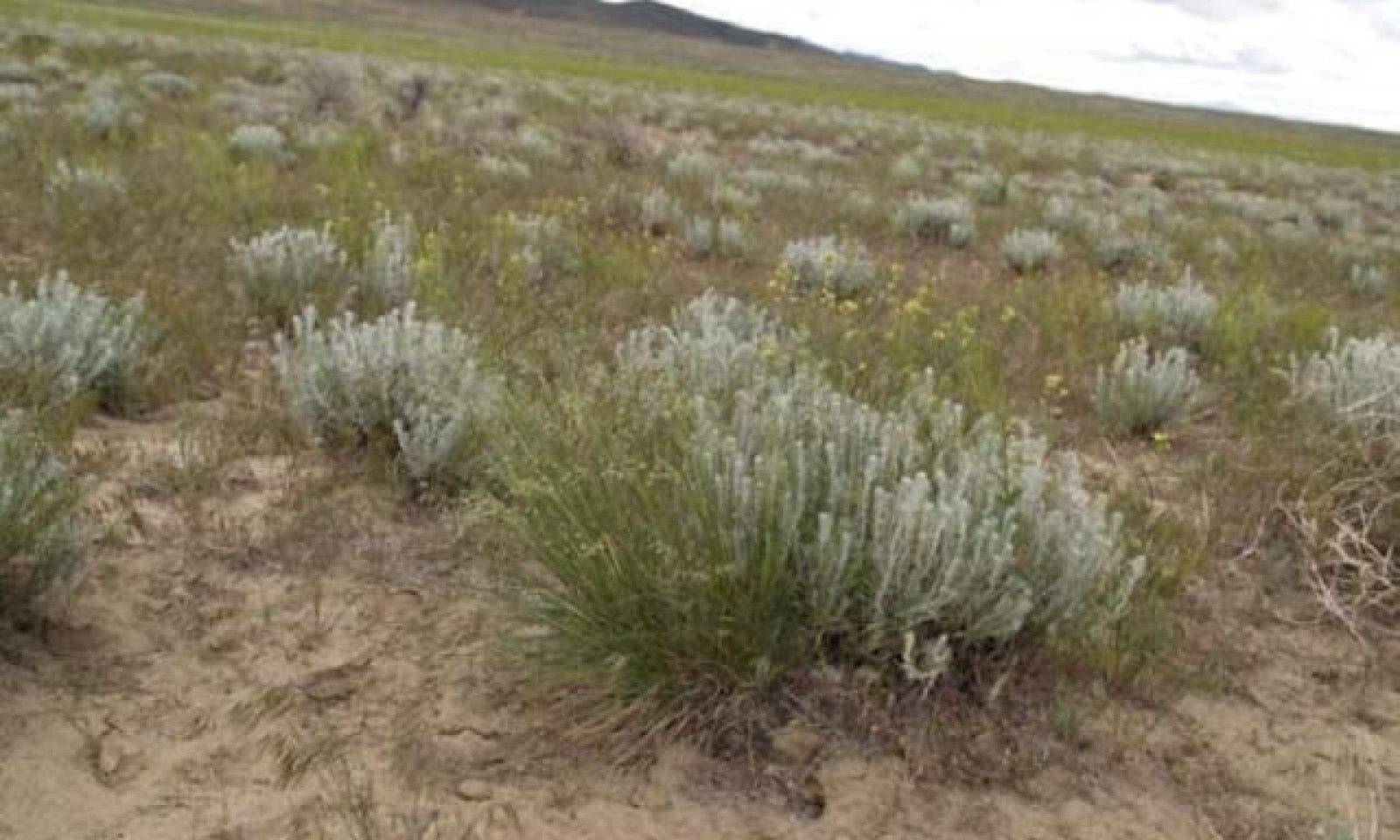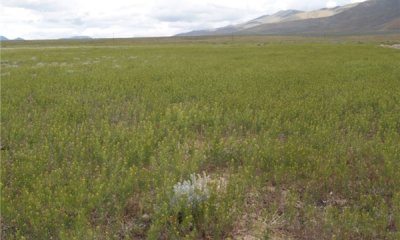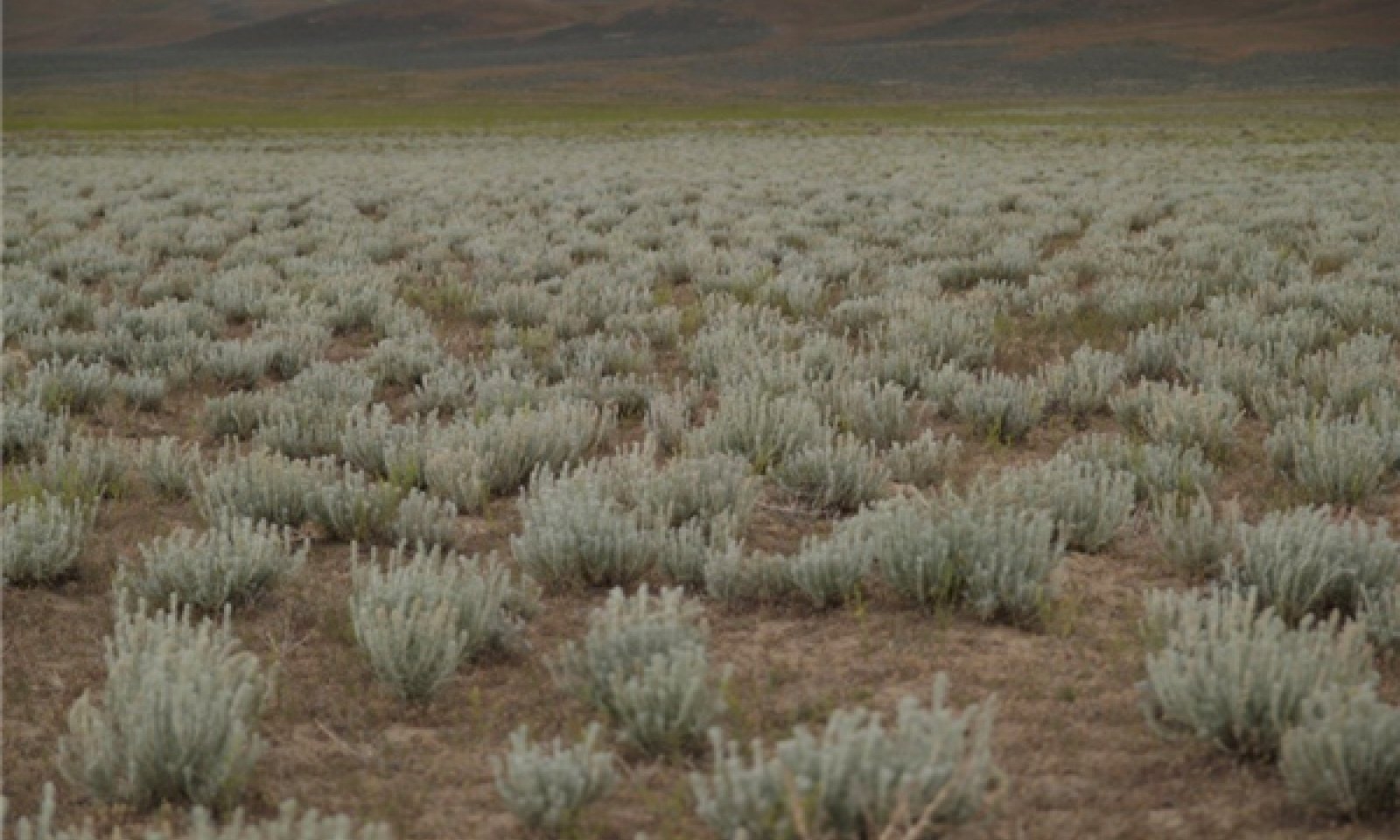
SILTY 4-8 P.Z.
Scenario model
Current ecosystem state
Select a state
Management practices/drivers
Select a transition or restoration pathway
-
Transition T1A
Trigger: introduction of non-native invasive species, such as cheatgrass, mustards, poverty weed, halogeton and Russian thistle.Slow variables: changes in kinds of animals and their grazing patterns, drought and/or changes in fire history that altered recruitment rates of native species.
More details
Threshold: reduction in the herbaceous understory, changes in soil hydrology including infiltration and runoff. Non-native invasive species cannot be easily removed from the system and have the potential to significantly alter disturbance regimes from their historic range of variation. -
Transition T2A
Trigger: Fire or inadequate rest and recovery from defoliation during spring and/or early summer.
More details
Slow variables: long-term decrease in grass density and reduced native species (shrubs and grass) recruitment rates. Increased reproduction, cover and density of non-native invasive species.
Threshold: loss of deep-rooted perennial bunchgrasses and loss of native shrubs reduces infiltration and increases runoff; this leads to reduced soil organic matter and soil moisture. Modified fire regime driven by non-native invasive annuals (changes in frequency, intensity, size and spatial variability of fire). -
Transition T3A
Trigger: Severe fire/ multiple fires, long term inappropriate grazing management, and/or soil disturbing treatments such as plowing.
More details
Slow variables: Increased production and cover of non-native annual species.
Threshold: Increased, continuous fine fuels modify the fire regime by changing intensity, size and spatial variability of fires. Changes in plant community composition and spatial variability of vegetation due to the loss of perennial bunchgrasses and sagebrush truncate energy capture spatially and temporally thus impacting nutrient cycling and distribution. -
No transition or restoration pathway between the selected states has been described
Target ecosystem state
Select a state
Description
The reference state is representative of the natural range of variability under pre-Euro settlement conditions. This site is very stable, with little variation in plant community composition. Community phase changes are primarily a function of chronic drought. Fire is infrequent and patchy due to low fuel loads. Wet years result in increased grass production, while drought years will reduce production. Shrub production will increase during wet years; however, recruitment of winterfat is episodic. Timing of disturbance combined with weather events determines plant community dynamics.
Submodel
Description
This state has the same two general community phases as the reference state, but differs by the presence of non-native invasive species in the understory. These non-natives are highly flammable and can promote wildfire where fires historically have been infrequent. Cheatgrass dieoff will reduce fine fuel loading, reducing threat of wildfire. Ecological function (soil hydrology, energy capture, nutrient cycling) has not changed, however the resiliency of the state has been reduced by the presence of annual non-natives. Prescribed grazing maintains state dynamics. Negative feedbacks enhance ecosystem resilience and contribute to the stability of the state. These include the presence of all structural and functional groups, low fine fuel loads, and an intact microbiotic crust that protects the soil surface from erosion. Positive feedbacks decrease ecosystem resilience and decrease the stability of the state. These include cheatgrass’s high seed output, persistent seed bank, rapid growth rate, ability to cross-pollinate and adaptations for seed dispersal.
Submodel
Description
This state consists of one community phase. This site has crossed a biotic threshold and site processes are being controlled by shrubs. Bare ground has increased.
Submodel
Description
This state has two community phases a non-native annual dominated phase and a shrub with a non-native annual understory dominated phase. Annual non-native species dominate the site and control site resources and drive ecological dynamics. Bare ground may be abundant. Spatial and temporal energy capture and nutrient cycling has been truncated. Site function is primarily controlled by abiotic factors such as soil erosion, soil temperature and wind. Cheatgrass dieoff will reduce fine fuel loading and litter cover. Strong positive feedbacks contributing to this state include persistence of non-native seedbank and competition between natives and non-natives for limited soil moisture and nutrients. Decreased variability in the fuel structure and loss of structural and functional groups also contribute to the stability of the state.
Range plantings on this site are typically not successful because of limited precipitation. Management of this state should include prescribed grazing to manage fine fuel loads to reduce the threat of wildfire and allow for recruitment of winterfat.
Submodel
Mechanism
Trigger: introduction of non-native invasive species, such as cheatgrass, mustards, poverty weed, halogeton and Russian thistle.Slow variables: changes in kinds of animals and their grazing patterns, drought and/or changes in fire history that altered recruitment rates of native species.
Threshold: reduction in the herbaceous understory, changes in soil hydrology including infiltration and runoff. Non-native invasive species cannot be easily removed from the system and have the potential to significantly alter disturbance regimes from their historic range of variation.
Mechanism
Trigger: Fire or inadequate rest and recovery from defoliation during spring and/or early summer.
Slow variables: long-term decrease in grass density and reduced native species (shrubs and grass) recruitment rates. Increased reproduction, cover and density of non-native invasive species.
Threshold: loss of deep-rooted perennial bunchgrasses and loss of native shrubs reduces infiltration and increases runoff; this leads to reduced soil organic matter and soil moisture. Modified fire regime driven by non-native invasive annuals (changes in frequency, intensity, size and spatial variability of fire).
Mechanism
Trigger: Severe fire/ multiple fires, long term inappropriate grazing management, and/or soil disturbing treatments such as plowing.
Slow variables: Increased production and cover of non-native annual species.
Threshold: Increased, continuous fine fuels modify the fire regime by changing intensity, size and spatial variability of fires. Changes in plant community composition and spatial variability of vegetation due to the loss of perennial bunchgrasses and sagebrush truncate energy capture spatially and temporally thus impacting nutrient cycling and distribution.
Model keys
Briefcase
Add ecological sites and Major Land Resource Areas to your briefcase by clicking on the briefcase (![]() ) icon wherever it occurs. Drag and drop items to reorder. Cookies are used to store briefcase items between browsing sessions. Because of this, the number of items that can be added to your briefcase is limited, and briefcase items added on one device and browser cannot be accessed from another device or browser. Users who do not wish to place cookies on their devices should not use the briefcase tool. Briefcase cookies serve no other purpose than described here and are deleted whenever browsing history is cleared.
) icon wherever it occurs. Drag and drop items to reorder. Cookies are used to store briefcase items between browsing sessions. Because of this, the number of items that can be added to your briefcase is limited, and briefcase items added on one device and browser cannot be accessed from another device or browser. Users who do not wish to place cookies on their devices should not use the briefcase tool. Briefcase cookies serve no other purpose than described here and are deleted whenever browsing history is cleared.
Ecological sites
Major Land Resource Areas
The Ecosystem Dynamics Interpretive Tool is an information system framework developed by the USDA-ARS Jornada Experimental Range, USDA Natural Resources Conservation Service, and New Mexico State University.




